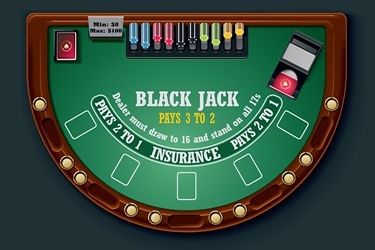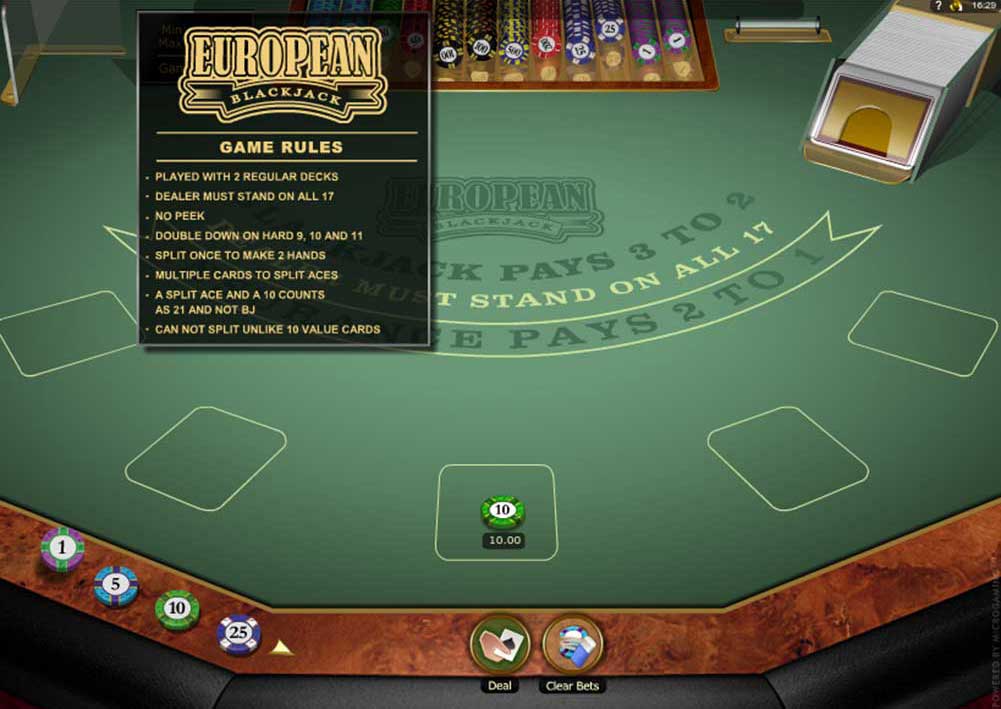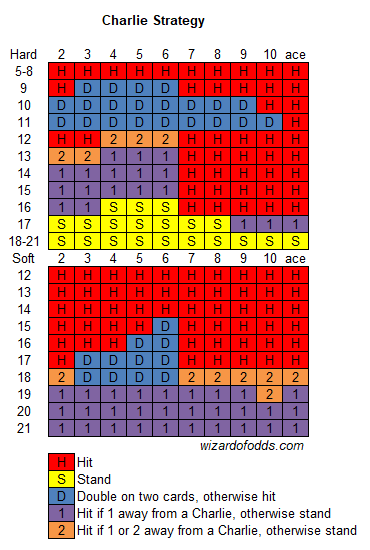Blackjack Rules Not Casino
Blackjack rules vary from casino to casino, which makes learning blackjack strategy more complicated. However, many correct moves are fundamental enough that they do not differ from casino to casino, and most large scale casinos have very similar rules - usually matching those in Vegas or A.C. The basic rules of blackjack are simple. Players try to score as close to 21 as possible without exceeding 21. In contrast to poker, where players compete with each other, blackjack is a one-on-one game between each player and the dealer. As the dealer, the basic rules of blackjack still apply. Cards 2 through 10 are worth their face value. To do this the player must have a hand that will be higher than the dealer’s and not to go over 21. The suits of the cards do not play any role in the game. The hand value is simply calculated by summing up the point value of each card in the hand. Blackjack Rules. I overhear a lot of bad gambling advice in the casinos. Perhaps the most frequent is this one, 'The object of blackjack is to get as close to 21 as possible, without going over.' The object of blackjack is to beat the dealer. To beat the dealer the player must first not bust (go over 21) and second either outscore the dealer or have the dealer bust.
Yes, understanding the basics of blackjack is relatively easy. But, before you can walk away a winner, you need a deeper understanding of the nuances of the game and casino protocol.
Finding a table: Strategic seating
Blackjack begins by selecting a seat at the table. Typically, a blackjack table allows for five to seven players. Whenever you see an empty seat at a blackjack table, you may assume it’s for your taking (unless chips or a coat are holding the spot for a player who just stepped away for a moment or unless some player is playing two hands). In most cases, joining a game in progress is okay, although some tables have a No-Midshoe Entry policy (usually marked by a sign at the table), which means you have to wait until the shuffle before playing.
For your first trip to the tables, you’re better off finding a nearly full table. Although the number of players at the table hardly affects the odds on your hands, the game is much quicker with fewer players. A fuller table gives you more time to think about each hand without being rushed or pressured.
Seeking single-deck tables
Without getting into a lot of math, here’s a good rule to follow: The fewer decks the casino uses, the better for you. Your chances for success increase if you can find a single-deck game. Most casinos worldwide have gone to six or more decks in an attempt to thwart card counters (skilled players who keep track of cards). But some places still deal blackjack the old-fashioned way — with one deck of 52 cards. Most of the casinos in northern Nevada (Reno, Lake Tahoe, and Wendover) still use one deck of cards at many of their blackjack tables. If you aren’t sure how many decks the casino is using, just ask.
Eyeing table bet levels
Before you actually sit down, look for the table’s minimum and maximum betting limits. Every table has these fixed limits, which the casino usually posts on a small sign located on the table to the right of the dealer.
You may sit down at a table where the placard says $5–$500, which means you have to bet at least $5 on every hand and can never bet more than $500 on any one spot. Typically, the higher the minimum starting bet, the higher the maximum bet for that table.

When you’re starting out, find the lowest minimum table in the casino and begin there. Making smaller bets keeps you out of trouble until you understand the game better — and you’re less likely to end up sitting next to a high roller (who may not appreciate a novice at his table).


Purchasing chips
After you select your seat, you need to buy chips from the dealer. Select the amount of money you want to start with and lay your cash on the felt in front of you. The dealer changes your cash into chips and slides them across the felt to you.
Don’t hand your money directly to the dealer; doing so is a breach of etiquette and brands you as a greenhorn.
After you receive your chips, leave them on the table in front of you. Chips come in several denominations and are color-coded. Although every casino uses distinctive chips, most colors are standard.
Rules For Blackjack
Start off with a small amount of chips. A good approach is to cash in no more than 25 percent of your daily bankroll for chips. For example, if you budget $400 for the day, buy in for no more than $100 to start. This way, when you’re losing, you minimize the temptation to bet more than you planned. You can always buy more chips later if necessary.
Blackjack Rules Casino
Homing in on house rules
Casino Blackjack 21
Blackjack rules are fairly similar worldwide — with a few variations. Sometimes a small placard sitting on the table indicates where the casino stands in regard to certain scenarios. If you don’t see a placard, you may ask the dealer what the house rules are, even when you’re in the middle of a hand.
Does the dealer hit on a soft 17?
A soft hand is any hand that counts an ace as 11 rather than 1. The hand is soft because it can’t bust on the next card. For example, if you hit (take another card) a soft 18 (an ace and a 7) with a 6, the ace automatically reverts to 1 (rather than 11), and the hand total is now 14 (rather than 24, which would be a bust).
Whether a dealer hits on a soft 17 is usually spelled out in bold white letters right on the felt. Normally the dealer counts an ace as 11 anytime he has a hand of 17 or more. However, about half the casinos worldwide deviate from this rule on soft 17 (an ace and a 6). In those cases, the ace counts as 1, and the dealer hits his soft 17.

Blackjack Rules Not Casinos
Is doubling down restricted to certain card combinations?
In Las Vegas, casinos typically allow doubling down, an option that allows you to double your bet, on any two cards, but other places may restrict this move to just 10s or 11s. The placard probably won’t list restrictions to doubling down. If you aren’t sure whether restrictions are in place, don’t be afraid to ask the dealer, even if you’re in the middle of a hand.
Can you surrender?
A playing option known as surrender is an extremely profitable option for you as a player, but not many casinos offer it. When you surrender, you lose half of your initial bet and give up your hand. For example, if you bet $10 and are dealt a 16, you can surrender and only lose $5 (half your bet) rather than risk the entire $10 on a bad hand. Once again, the placard may not readily advertise this rule variation, so always ask if surrender is available.
Dealing what’s in the cards
All right, you’re situated at the table, you’ve made your bet in the betting box, and your heart is pumping like a jackhammer. The dealer flashes you a warm smile, wishes you good luck, shuffles the deck, and asks you to cut the cards.

If you’re playing a one- or two-deck game, the dealer holds the cards in his hands and deals you two cards face-down. You can pick up these cards, but make sure you only hold them in one hand.
However, the majority of blackjack games today use six or eight decks. In these cases, the dealer deals your two cards face-up from a shoe (a boxlike device that houses the cards).
Whether your cards are dealt face-up or face-down really doesn’t matter — dealers follow strict rules, and seeing the values of your cards doesn’t influence them. Dealers’ hands always start off with one card exposed and one card hidden, regardless of the number of decks.